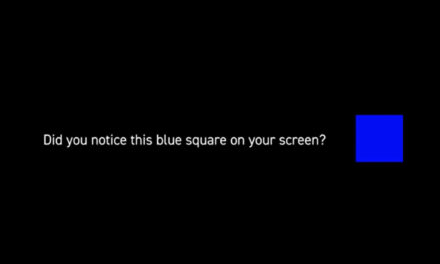In part due to the unleashing of Jew-hatred in the aftermath of Hamas’s Oct. 7 massacre, anti-Semitism in the United States spiked by a record 140%, according to figures released by the Anti-Defamation League(ADL) on Tuesday, April 16. Nearly 9,000 incidents of assault, harassment and vandalism—including more than 5,000 in the post-Oct. 7 period—were reported across America last year. The figure not only blew away the totals from 2022—itself a record year—but outpaced the marks from the previous three years combined.
The ADL began tracking relevant data in 1979.
The numbers in the ADL Audit of Anti-Semitic Incidents bear out a staggering 24 incidents of Jew-hatred per day in the United States.
National Emergency
That only includes examples, which are reported. According to the American Jewish Committee, nearly four in five Jews who experience anti-Semitic harassment don’t report it to law enforcement or media, mainly for fear of ongoing harassment.
“Anti-Semitism is nothing short of a national emergency, a five-alarm fire that is still raging across the country and in our local communities and campuses,” said Jonathan Greenblatt, ADL CEO. “Jewish Americans are being targeted for who they are at school, at work, on the street, in Jewish institutions and even at home.”
Education Failures
The rise was particularly felt on college campuses, where reported anti-Semitism activity increased by 321% from 2022. Hamas supporters have turned out for demonstrations across the country on campuses after Oct. 7, often calling for violence against Jews and reveling in the Oct. 7 massacre.
That particular phenomenon has led to congressional hearings and the subsequent ouster of the presidents of Harvard and the University of Pennslyvania for failure to condemn calls for the genocide of Jews, despite many opportunities to do so.
The tide appears to be turning, though, at least on some campuses. Recently, the University of Southern California canceled the planned commencement speech of its valedictorian. While the official reason given was to maintain campus security and safety, critics pointed to the student’s anti-Semitic social media postings, including the labeling of Zionism as a “racist-settler colonial ideology.”
Meanwhile, a tenured political science professor at Hobart and William Smith colleges was removed from the classroom following the publication of an essay celebrating the events of Oct. 7 and calling them “exhilarating.”
Thirty-six percent of the 8,873 reported incidents of anti-Semitism last year contained elements referencing Israel or Zionism, compared with 6.5% in 2022, the ADL says.
Even excluding all Israel-related incidents, though, anti-Semitic incidents still rose by 65% to 5,711 incidents recorded in 2023.
The pre-Oct. 7 period was not quiet, either, with monthly year-over-year increases in February, March, April, May and September. Each of these months broke the previous monthly record for most incidents, set at 394 in November 2022.
Elementary Schools
Grade schools also became a breeding ground for antisemitism, with the 1,162 incidents there marking an increase of 135%. The ADL cited K-12 school incidents including “swastikas scrawled on desks, playgrounds and school buildings; anti-Semitic images AirDropped to large groups of unwitting students; harassment directed at visibly Jewish students; and teachers saying Jews are rich, powerful and control banks.”
Peggy Shukur, vice president of the east division of the Anti-Defamation League, said recently that “unvetted curriculum is being developed, sometimes created through teacher unions or other groups with some kind of ideological agenda, resulting in the existence of curricula that is biased and sometimes anti-Semitic.”
Incidents of vandalism, bomb threats and swatting against synagogues and Jewish institutions also skyrocketed in 2023, according to the ADL data.
Oren Segal, vice president of the ADL Center on Extremism, said these incidents were “all aimed at terrorizing the community by disrupting services and activities” at sites where Jews congregate.
“Our tracking of a swatting network enabled ADL to offer crucial intelligence to law enforcement, ensuring accountability for perpetrators, while also pre-emptively alerting targeted communities and mitigating potential harm,” said Segal.
The ADL recently issued a call to state governors across America to enact individual, state-level versions of the Biden administration’s National Strategy to Counter Antisemitism.
No Need To Fear?
“This crisis demands immediate action from every sector of society and every state in the union,” said Greenblatt. “We need every governor to develop and put in place a comprehensive strategy to fight anti-Semitism, just as the administration has done at the national level.”
The Biden administration has been criticized, though, for a failure to include enforcement mandates in its national plan and to, in large measure, fulfill existing mandates to take action for violations of Title VI of the Civil Rights Act.
“Despite these unprecedented challenges, American Jews must not give in to fear,” Greenblatt said. “Even while we fight the scourge of anti-Semitism, we should be proud of our Jewish identities and confident of our place in American society.”
Methodology
The ADL Audit includes both criminal and non-criminal acts of harassment and intimidation, including distribution of hate propaganda, threats and slurs, as well as vandalism and assault. Compiled using information provided by victims, law enforcement and community leaders, and evaluated by ADL’s professional staff, the Audit provides a regular snapshot of one specific aspect of the Jewish-American experience while identifying possible trends in the types of activity reported.
ADL’s 2023 Audit numbers contain 1,350 incidents included due to a post-October 7 methodology update (see Methodology in the Audit). Excluding incidents included under the methodology update, ADL tabulated 7,523 incidents, a 103-percent increase in antisemitic incidents from the incident total in 2022.
The complete dataset for anti-Semitic incidents for 2016-2023 is available on ADL’s H.E.A.T. Map, an interactive online tool that allows users to geographically chart anti-Semitic incidents and extremist activity.
The Audit offers a snapshot of one of the ways American Jews encounter anti-Semitism, but a full understanding of anti-semitism in the U.S. requires other forms of analysis as well, including public opinion polling, assessments of online antisemitism and examinations of extremist activity, all of which ADL offers in other reports, such as the ADL Survey of Antisemitic Attitudes in America 2024, Campus Antisemitism: A Study of Campus Climate Before and After the Hamas Terrorist Attacks, ADL Global 100, Online Hate and Harassment: The American Experience, Murder and Extremism and White Supremacist Propaganda.








